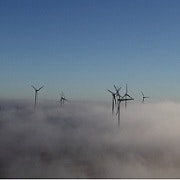Are feed-in tariff policies worth pursuing?
Given that the effects of energy efficiency measures tend to be offset by a greater energy consumption that comes with economic growth, these measures, while important, will not by themselves be sufficient to achieve major reductions in emissions – making the move toward cleaner energy a rising priority for climate change mitigation.
Countries around the world, including most of those in Europe and Central Asia, have used various incentive programs to accelerate the deployment of renewable energy. The most popular is the feed-in tariff.
Under a feed-in tariff policy, governments set prices (often at a premium) for different types of renewable power to compensate producers for the higher cost of producing clean energy. Utilities are then required to purchase power from renewable resources at this price – but have the option of either spreading the additional costs across their entire customer base or receiving compensation from the government to recover the incremental costs. Feed-in tariffs thus essentially subsidise renewable energy sources to make them cost-competitive with fossil-fuel-based technologies.
Although feed-in tariff policies have gained worldwide popularity, their cost effects have become a primary concern for policymakers in many countries. Whether the rising costs are recovered from ratepayers or taxpayers, they can create both political and economic pressures. Households in developing countries are particularly vulnerable to rising tariffs, as spending on energy accounts for a larger share of their incomes than for households in developed countries.
To better understand the effectiveness of existing feed-in tariff policies and learn how their design might be improved, we reviewed wind feed-in tariff policies in 35 European countries between 1991–2010 and matched them with generator-level wind installation data. Our study found that higher subsidies have not necessarily yielded greater levels of renewable installation. Three factors could explain this weak correlation.
First, countries providing high subsidies may lack the necessary institutional and regulatory environment to attract investment and may have failed to scale up investment because of this non-economic barrier.
Second, overly generous subsidies may have provided rent-seeking opportunities as suppliers along the value chain push up system costs in order to take a share of excess remuneration. In this case, higher feed-in tariffs are correlated with higher system costs, which in turn inhibit the ability of the industry to expand renewable capacity.
Third, our study shows that higher feed-in tariffs are negatively correlated with the wind capacity factor, indicating that high remuneration may have allowed investment in high-cost sites such as those with low wind speed. Since wind investment is negatively correlated with investment cost (in euros per megawatt-hour), high subsidies again result in a weaker investment response.
But the results also show that contract duration and interconnection guarantees (both technical and legal) for renewable electricity are important determinants of the “shadow price” of feed-in support. Extending a five-year agreement by just one year increases annual wind investment by six percentage points on average. And providing guaranteed grid access almost doubles wind investment in one year. Because both parameters are crucial to investor confidence in long-term market security, the results suggest that policy certainty is at least as important as short-run financial incentives in attracting private participation.
Finally, our analysis shows that the design of the overall electricity market matters. A competitive market tends to be more conducive to renewable deployment. One possible explanation is that wholesale competition raises the upside potential of renewable investments because many countries allow renewable energy generators to sell their power directly in the open exchange. This enables renewable developers to benefit from higher market prices, especially during the peak demand periods.
Overall, the experience of wind development in Europe suggests great potential for improving the cost-effectiveness of feed-in tariff policies. While the level of subsidy is a poor predictor of deployment, our study of East European and Central Asian experience suggests that governments can attract investment by providing favorable grid access conditions, investment stability guaranteed by a long-term feed-in tariff contract, and low administrative and regulatory barriers.
This article was originally published on the World Bank blog.
















